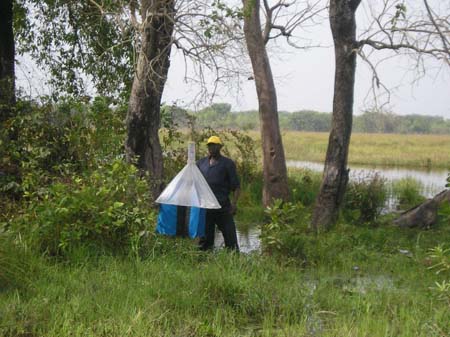Primary prevention
No vaccine against human African trypanosomiasis exists at present. Chemoprophylaxis is not recommended, owing to the toxicity of the available drugs. Prevention mainly relies on reducing exposure to tsetse bites.
Reduced vector exposure can involve vector control (insecticide spraying, use of targets and traps, sterile insect technique). Personal protection includes avoiding areas known to harbor infected tsetse flies, reducing the risk of being bitten by wearing protective clothing, and avoiding black and dark blue clothing. The use of insect repellents (such as N,N-diethyl-meta-toluamide [DEET]) may also provide some protection.[26][Figure caption and citation for the preceding image starts]: A trap used to catch tsetse flies. They are attracted to the blue color and land on the black partsFrom the collection of Dr J.R. Franco [Citation ends].
Secondary prevention
Prevention of the disease falls into:
Prevention of contact with the vector
Avoiding infected areas
Reducing the density of vectors: appropriate use of traps (or insecticide-treated targets), aerial insecticide spraying, or sterile male release as appropriate to the different environments
Selective spraying of cattle
Land used with subsequent tsetse habitat destruction
Reduction of the reservoir of the parasite
Early detection and treating of human cases
Diagnosis and treatment of affected cattle
Testing the blood donated by people coming from endemic areas
Applying the usual safety measures in clinical and research laboratories.
Use of this content is subject to our disclaimer